Ying Mao
qc-kmeans: A Quantum Compressive K-Means Algorithm for NISQ Devices
Oct 26, 2025Abstract:Clustering on NISQ hardware is constrained by data loading and limited qubits. We present \textbf{qc-kmeans}, a hybrid compressive $k$-means that summarizes a dataset with a constant-size Fourier-feature sketch and selects centroids by solving small per-group QUBOs with shallow QAOA circuits. The QFF sketch estimator is unbiased with mean-squared error $O(\varepsilon^2)$ for $B,S=\Theta(\varepsilon^{-2})$, and the peak-qubit requirement $q_{\text{peak}}=\max\{D,\lceil \log_2 B\rceil + 1\}$ does not scale with the number of samples. A refinement step with elitist retention ensures non-increasing surrogate cost. In Qiskit Aer simulations (depth $p{=}1$), the method ran with $\le 9$ qubits on low-dimensional synthetic benchmarks and achieved competitive sum-of-squared errors relative to quantum baselines; runtimes are not directly comparable. On nine real datasets (up to $4.3\times 10^5$ points), the pipeline maintained constant peak-qubit usage in simulation. Under IBM noise models, accuracy was similar to the idealized setting. Overall, qc-kmeans offers a NISQ-oriented formulation with shallow, bounded-width circuits and competitive clustering quality in simulation.
Next-Generation Phishing: How LLM Agents Empower Cyber Attackers
Nov 21, 2024



Abstract:The escalating threat of phishing emails has become increasingly sophisticated with the rise of Large Language Models (LLMs). As attackers exploit LLMs to craft more convincing and evasive phishing emails, it is crucial to assess the resilience of current phishing defenses. In this study we conduct a comprehensive evaluation of traditional phishing detectors, such as Gmail Spam Filter, Apache SpamAssassin, and Proofpoint, as well as machine learning models like SVM, Logistic Regression, and Naive Bayes, in identifying both traditional and LLM-rephrased phishing emails. We also explore the emerging role of LLMs as phishing detection tools, a method already adopted by companies like NTT Security Holdings and JPMorgan Chase. Our results reveal notable declines in detection accuracy for rephrased emails across all detectors, highlighting critical weaknesses in current phishing defenses. As the threat landscape evolves, our findings underscore the need for stronger security controls and regulatory oversight on LLM-generated content to prevent its misuse in creating advanced phishing attacks. This study contributes to the development of more effective Cyber Threat Intelligence (CTI) by leveraging LLMs to generate diverse phishing variants that can be used for data augmentation, harnessing the power of LLMs to enhance phishing detection, and paving the way for more robust and adaptable threat detection systems.
A Quantum-Classical Collaborative Training Architecture Based on Quantum State Fidelity
Feb 23, 2024
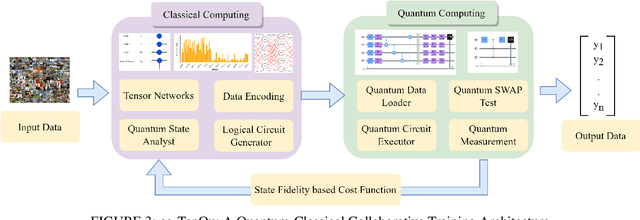


Abstract:Recent advancements have highlighted the limitations of current quantum systems, particularly the restricted number of qubits available on near-term quantum devices. This constraint greatly inhibits the range of applications that can leverage quantum computers. Moreover, as the available qubits increase, the computational complexity grows exponentially, posing additional challenges. Consequently, there is an urgent need to use qubits efficiently and mitigate both present limitations and future complexities. To address this, existing quantum applications attempt to integrate classical and quantum systems in a hybrid framework. In this study, we concentrate on quantum deep learning and introduce a collaborative classical-quantum architecture called co-TenQu. The classical component employs a tensor network for compression and feature extraction, enabling higher-dimensional data to be encoded onto logical quantum circuits with limited qubits. On the quantum side, we propose a quantum-state-fidelity-based evaluation function to iteratively train the network through a feedback loop between the two sides. co-TenQu has been implemented and evaluated with both simulators and the IBM-Q platform. Compared to state-of-the-art approaches, co-TenQu enhances a classical deep neural network by up to 41.72% in a fair setting. Additionally, it outperforms other quantum-based methods by up to 1.9 times and achieves similar accuracy while utilizing 70.59% fewer qubits.
RCPS: Rectified Contrastive Pseudo Supervision for Semi-Supervised Medical Image Segmentation
Jan 13, 2023



Abstract:Medical image segmentation methods are generally designed as fully-supervised to guarantee model performance, which require a significant amount of expert annotated samples that are high-cost and laborious. Semi-supervised image segmentation can alleviate the problem by utilizing a large number of unlabeled images along with limited labeled images. However, learning a robust representation from numerous unlabeled images remains challenging due to potential noise in pseudo labels and insufficient class separability in feature space, which undermines the performance of current semi-supervised segmentation approaches. To address the issues above, we propose a novel semi-supervised segmentation method named as Rectified Contrastive Pseudo Supervision (RCPS), which combines a rectified pseudo supervision and voxel-level contrastive learning to improve the effectiveness of semi-supervised segmentation. Particularly, we design a novel rectification strategy for the pseudo supervision method based on uncertainty estimation and consistency regularization to reduce the noise influence in pseudo labels. Furthermore, we introduce a bidirectional voxel contrastive loss to the network to ensure intra-class consistency and inter-class contrast in feature space, which increases class separability in the segmentation. The proposed RCPS segmentation method has been validated on two public datasets and an in-house clinical dataset. Experimental results reveal that the proposed method yields better segmentation performance compared with the state-of-the-art methods in semi-supervised medical image segmentation. The source code is available at https://github.com/hsiangyuzhao/RCPS.
QuCNN : A Quantum Convolutional Neural Network with Entanglement Based Backpropagation
Oct 11, 2022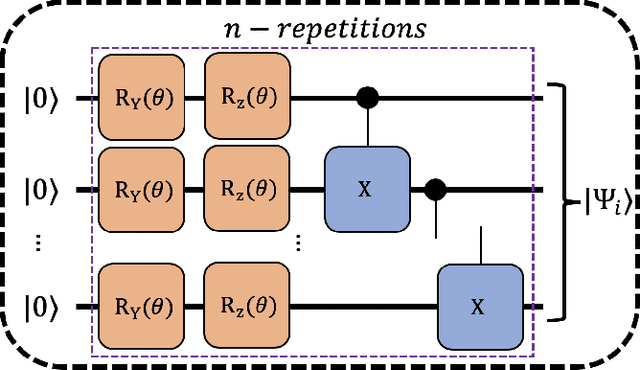
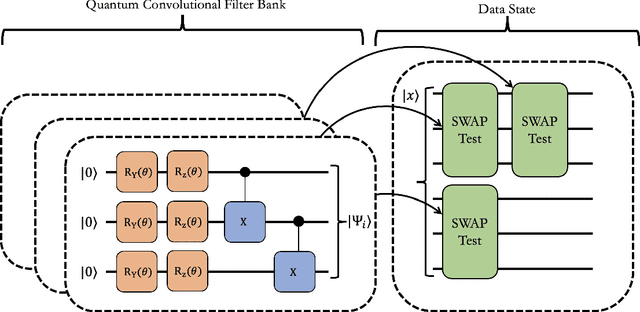
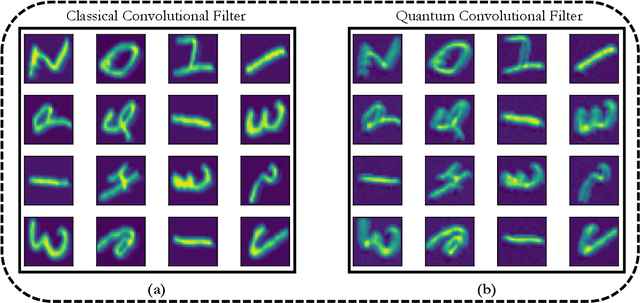
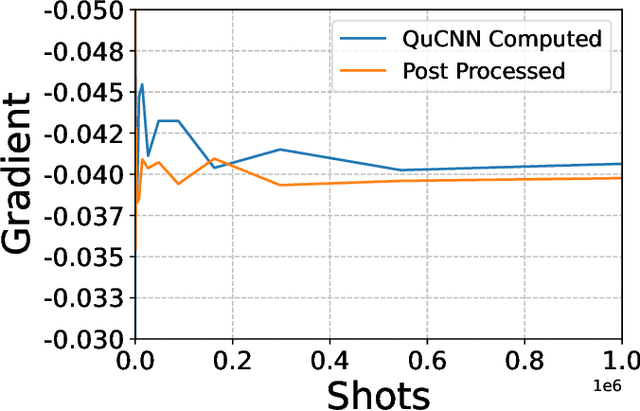
Abstract:Quantum Machine Learning continues to be a highly active area of interest within Quantum Computing. Many of these approaches have adapted classical approaches to the quantum settings, such as QuantumFlow, etc. We push forward this trend and demonstrate an adaption of the Classical Convolutional Neural Networks to quantum systems - namely QuCNN. QuCNN is a parameterised multi-quantum-state based neural network layer computing similarities between each quantum filter state and each quantum data state. With QuCNN, back propagation can be achieved through a single-ancilla qubit quantum routine. QuCNN is validated by applying a convolutional layer with a data state and a filter state over a small subset of MNIST images, comparing the back propagated gradients, and training a filter state against an ideal target state.
Quantum-Inspired Classical Algorithm for Principal Component Regression
Oct 16, 2020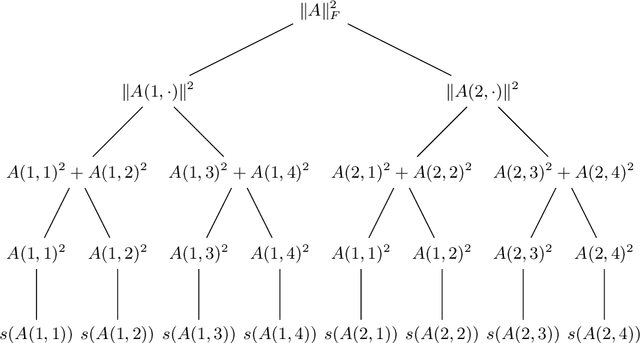
Abstract:This paper presents a sublinear classical algorithm for principal component regression. The algorithm uses quantum-inspired linear algebra, an idea developed by Tang. Using this technique, her algorithm for recommendation systems achieved runtime only polynomially slower than its quantum counterpart. Her work was quickly adapted to solve many other problems in sublinear time complexity. In this work, we developed an algorithm for principal component regression that runs in time polylogarithmic to the number of data points, an exponential speed up over the state-of-the-art algorithm, under the mild assumption that the input is given in some data structure that supports a norm-based sampling procedure. This exponential speed up allows for potential applications in much larger data sets.
The Intrinsic Properties of Brain Based on the Network Structure
Nov 02, 2019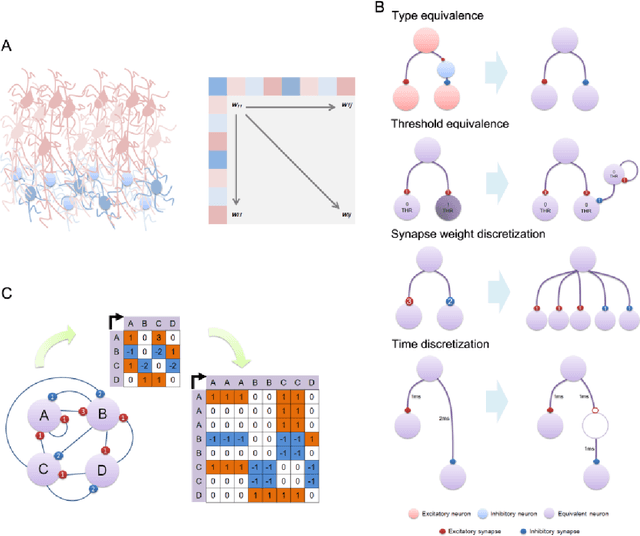
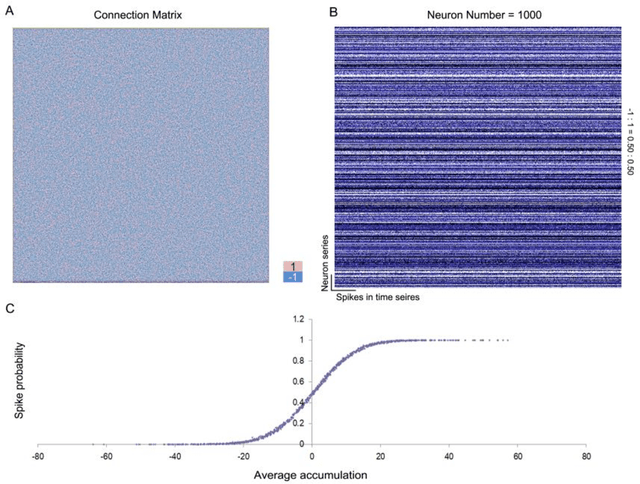
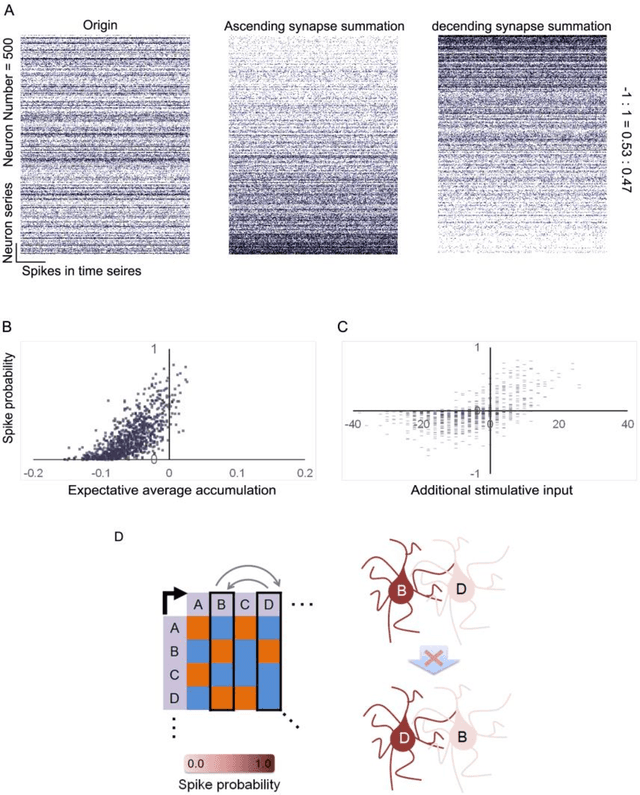
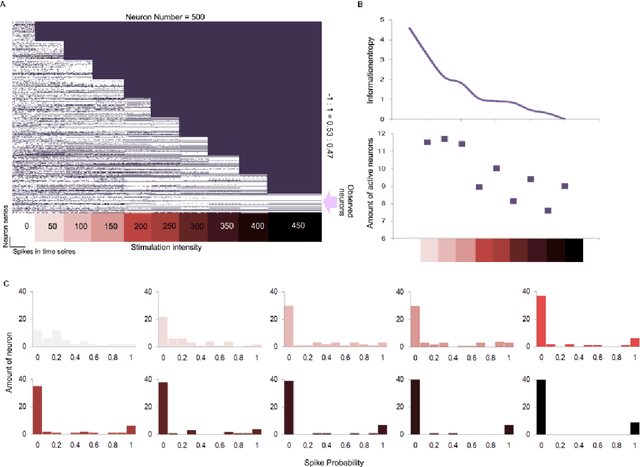
Abstract:Objective: Brain is a fantastic organ that helps creature adapting to the environment. Network is the most essential structure of brain, but the capability of a simple network is still not very clear. In this study, we try to expound some brain functions only by the network property. Methods: Every network can be equivalent to a simplified network, which is expressed by an equation set. The dynamic of the equation set can be described by some basic equations, which is based on the mathematical derivation. Results (1) In a closed network, the stability is based on the excitatory/inhibitory synapse proportion. Spike probabilities in the assembly can meet the solution of a nonlinear equation set. (2) Network activity can spontaneously evolve into a certain distribution under different stimulation, which is closely related to decision making. (3) Short memory can be formed by coupling of network assemblies. Conclusion: The essential property of a network may contribute to some important brain functions.
 Add to Chrome
Add to Chrome Add to Firefox
Add to Firefox Add to Edge
Add to Edge